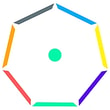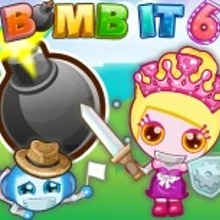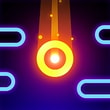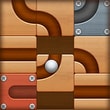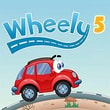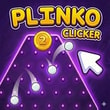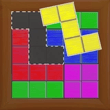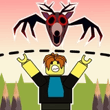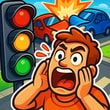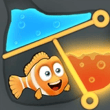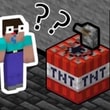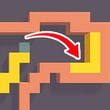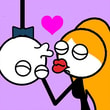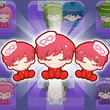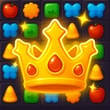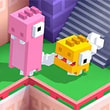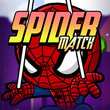💣 A spark, a fuse, and a very loud plan
Bomb it 6 opens like a neon carnival that misplaced its safety manual. A tidy grid, candy-colored walls, and an opponent whistling like you’re not about to turn the map into modern art. You drop the first bomb with that familiar mix of confidence and mild panic, step away three tiles, and watch the blast paint tidy cross-shaped fire through the maze. It’s elegant chaos: simple rules, explosive consequences, and a rhythm that flips between hunter and hunted every few seconds. One clean chain and the arena feels like yours; one greedy corner trap and you’re sprinting with a grin, pretending this was all part of the plan.
🧭 The maze is a puzzle with teeth
Every round deals you a fresh labyrinth—breakable crates hiding routes, indestructible pillars sketching traffic lanes, sneaky cul-de-sacs that turn victory laps into surprise ambushes. You learn to read corners as if they were sentences. Two pillars aligned? That’s a safe pocket, unless a rival brings a long-range fire upgrade. A cluster of crates near center? It’s a loot piñata—but cracking it during a busy midgame is basically sending out party invitations to everyone with a bomb. The smartest players carve corridors that suit their kit, then shepherd enemies into exactly the wrong square at exactly the right time.
⚙️ Power-ups that turn ideas into fireworks
The fun isn’t just in the blast—it’s in the tools that make blasts misbehave. Extra Bombs lets you layer traps like a devious pastry chef. Fire Range stretches your reach until pillars across the map start feeling shy. Kick and Throw let you play soccer with lit explosives, banking a bomb around a corner so clean it feels like geometry class finally paid rent. Remote Detonator changes the whole tempo: plant, walk away, pretend to forget, and click the goodbye button when footsteps get cocky. Roller skates add delightful recklessness; blast shield grants exactly one heroic mistake. Put them together and you get a sandbox of tiny heists where timing is king and style is a very loud queen.
🎯 Modes that change the joke, not the punchline
Classic Battle is the purest distillation: last player standing, no excuses, just tight routes and smarter traps. Coin Collect flips objectives—blow crates for cash, bait rivals into clearing your path, race for a vault in the last ten seconds while everyone else suddenly remembers they, too, love money. Team Battle invites that delicious, chaotic coordination where one player corners while the other denies exits, then both laugh when a friendly bomb turns a perfect plan into slapstick. Survival strings waves of AI in labyrinths that get nastier by the round; it’s part endurance test, part highlight reel generator. No matter the mode, the verbs stay crisp: place, reposition, predict, punish.
🧠 Tiny truths the arena teaches fast
Bomb placement isn’t decoration—it’s conversation. Lay a bomb near a crate and you’re asking, “Want this lane?” Drop one in a choke and you’re saying, “I know where you’re going next.” Chain two with a one-tile gap and you’re writing the world’s loudest semicolon. The first minute rewards bold demolition for power-ups; the midgame rewards restraint, as long fields of fire make careless steps expensive. Endgame turns the map small and personal—fewer walls, more mind games, and a dance where your opponent’s habits matter more than your upgrades.
👟 Movement with purpose, not just panic
Your avatar is snappy and honest. Corners cut clean when you commit; hesitations cost tiles that explosions happily notice. Kicks occur on contact, throws demand a beat of setup—both punish autopilot. There’s a tiny grace window after placing a bomb so you don’t trap yourself by accident, but if you stack greed on greed, the arena shrugs and writes your obituary in smoke. Smart pathing matters: hug pillars to break sightlines, weave two tiles off center to keep exit options, and never, ever chase in a straight line when a rival owns a remote detonator.
🗺️ Arenas with personality, not gimmicks
Candy Yard is bright, readable, full of corridors that invite creative bank shots. Tech Lab sprinkles conveyor tiles that tug bombs and players into comic timing errors you’ll pretend were planned. Frozen Plaza adds slick floors where momentum becomes a weapon—kick a bomb, slide after it, then pivot out while an unlucky rival discovers why traction matters. Neon Night drops light-pulsing hazards that announce cycle timing with perfect audio cues; learn the rhythm and you’ll dance between beams like you practiced. Each map is fair at a glance and rich after five runs, which is the sweet spot for a party brawler with a thinking habit.
🔊 Audio that low-key coaches your instincts
Fuse ticks build urgency; longer range raises the pitch just enough that you start respecting distance without reading a tooltip. Kicked bombs thump in a way that spells “moving threat” even off-screen. Power-up grabs plink with distinct notes—speed sings, remote clicks, shield chimes—so you know what your neighbors just learned, and you adjust. When the arena shrinks near time, the track tightens, trading bounce for pulse; that’s your cue to stop farming and start finishing.
🎨 Clear, bright, and legible at speed
Bomb it 6 wears its style proudly—bubblegum colors, glossy walls, and exaggerated explosions that bloom big then vanish fast so the next decision stays visible. Items glow with unique silhouettes, blast lines draw crisp crosses, and characters pop against any background. Accessibility options help the late-night grind: color-blind friendly icons on power-ups, reduced flash for chain reactions, thicker outlines during sudden-death shrink. It’s all tuned so the screen looks like candy but reads like a playbook.
🤝 Couch rivalries and online grudges that feel friendly
Whether you’re brawling AI, passing a keyboard, or queuing into quick matches, matches stay snackable and repeatable. Losers re-queue fast, winners don’t get to gloat for long, and the lobby vibe leans toward “one more” even when you said you were done three games ago. The best part is the micro-drama—accidental self-owns, heroic saves, a last-second remote pop that clears three names and a quarter of your respect for each other. It’s competitive in the way sibling races are: loudly, and with grins.
🛠️ Loadouts and mutators for custom chaos
Want pure strategy? Disable random crates, start everyone with Remote, lower range, raise skill ceiling. Want fireworks? Double bombs, high drop rates, conveyor arenas, and a sudden-death ring that closes fast enough to force bravery. House rules breathe new life into old maps: first to three, no throws, skate off, shields banned, or “only kicks and basic bombs”—a clinic in spacing and patience. Because the core is tight, the variants sing.
📈 Mastery you can feel in your hands
Early skill is not getting stuck. Mid skill is controlling space—blasting lanes you like, denying routes you don’t. High skill is reading opponents—counting their bombs, sniffing out remote timing, baiting a kick into a trap you set three moves ago. None of this demands spreadsheets. It rewards attention: your ears catch a fuse, your eyes spot a greed path, your thumb places the bomb that turns hope into physics.
💡 Tips you’ll pretend you invented
Drop bombs as punctuation on turns; exits are where people commit without thinking. Kick to herd, throw to punish, remote to finish. When you grab skates, practice one lap of slower corners before you start styling; speed turns heroics into hubris fast. Two bombs, one tile apart, are better denial than one long line; they write No in capital letters. And if someone runs Remote, stop chasing—hold angles, make them come to you, let impatience shave their life total.
🌟 Why Bomb it 6 belongs on your Kiz10 rotation
Because it’s the perfect arcade handshake—easy to learn, hard to master, and hilarious in both victory and defeat. Five minutes buys a crisp win and a clip-worthy self-own you’ll laugh about later. An hour becomes a montage of clever traps, last-tile escapes, perfect coin steals, and one glorious chain reaction that deletes a corner of the map and your doubt with it. Bomb it 6 proves that the oldest party trick in gaming—place bomb, run away, pretend innocence—still feels brand new when the design respects your brain and flatters your reflexes.
 Obby: Bomberman
Obby: Bomberman






